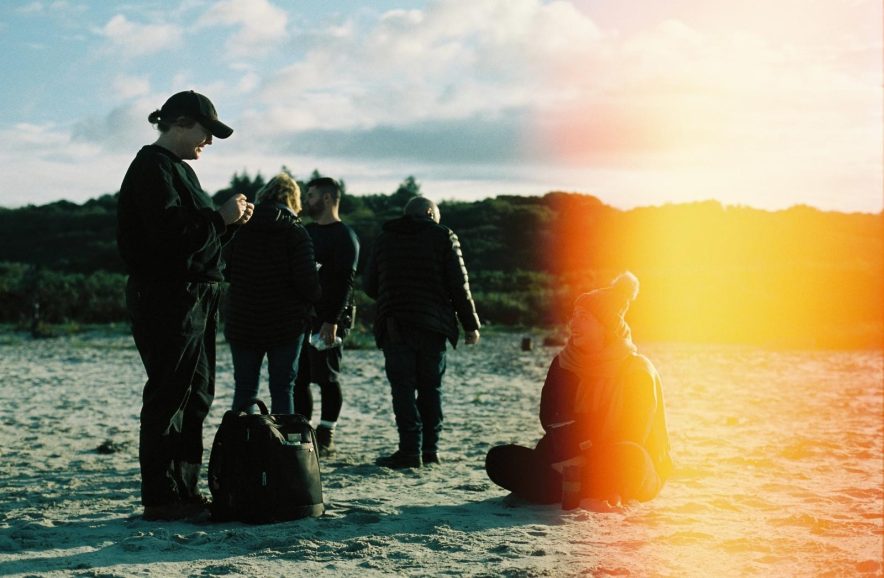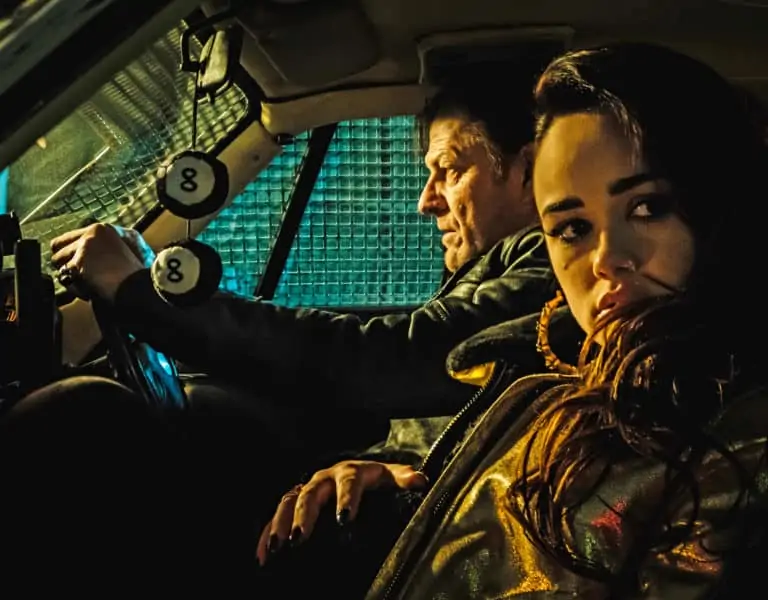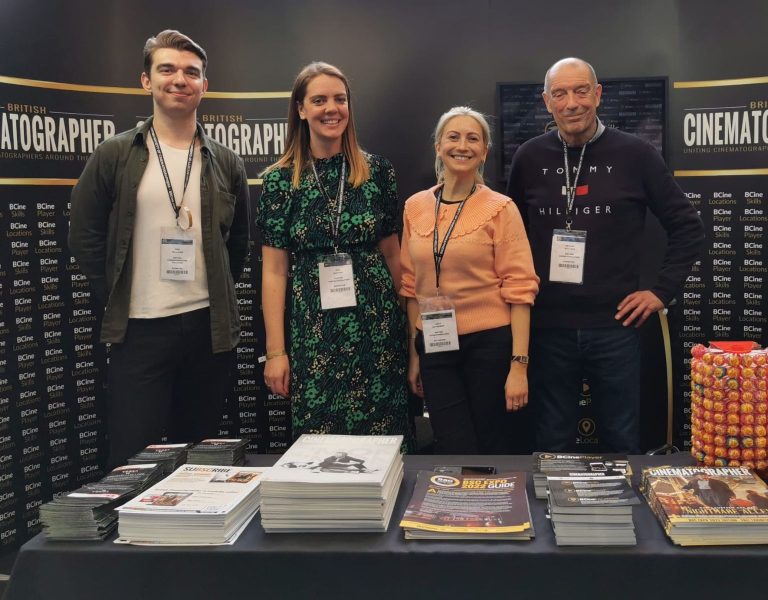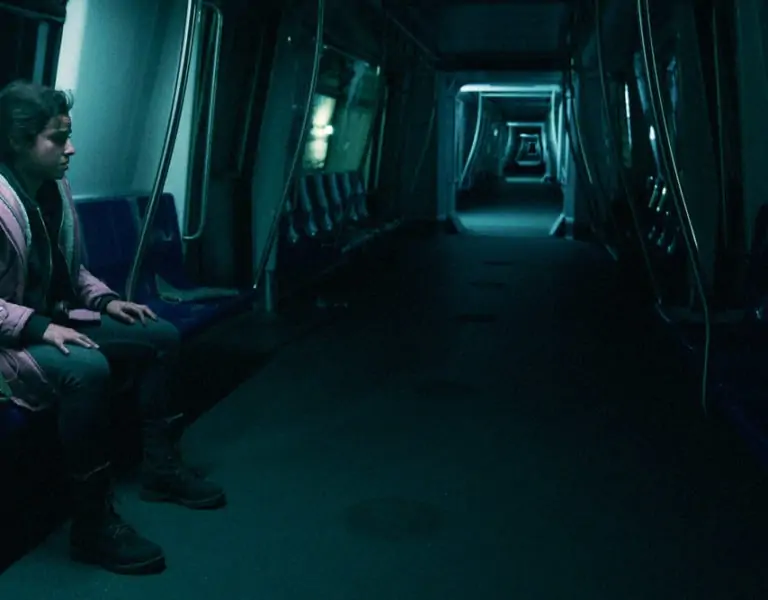GIRLS ON FILM
Cinematographer Suzie Lavelle BSC ISC divulges insights into her craft for the film adaptation of Megan Hunter’s book, The End We Start From, meticulously tailored for the screen. Within her process, she elaborates on sculpting the visually compelling elements that elevate this dystopian thriller.
Aficionados of Armageddon and dystopian-esque cinema are in for an intriguing revelation come the dawn of the new year. That’s because beyond the influx of films within this genre, including notable titles like I Am Legend, The Walking Dead, The Road and hit series The Last of Us, a distinct shift surfaces.
Contrary to the typical narrative, where male protagonists navigate desolate realms, The End We Start From offers a refreshing perspective on the genre. This visual tale draws inspiration from Megan Hunter’s eponymous novel, ingeniously adapted into a screenplay by Alice Birch, renowned for her work on Lady Macbeth and Succession.
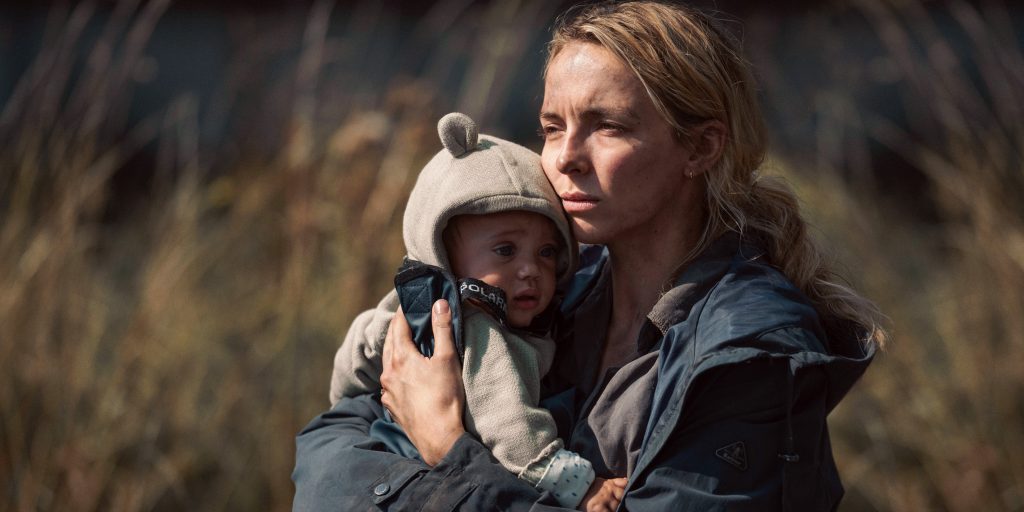
It’s the turn of a woman and her baby to take centre stage, offering a nuanced view of survival, motherhood and resilience amid societal collapse. The versatile Jodie Comer plays the unnamed mother, embarking on a poignant journey northward alongside her husband, portrayed by Joel Fry, and their precious child, seeking refuge and safety. The audience follows a heavily pregnant woman-turned-new mother navigating the chaos, finding resilience in the birth of her first child amidst the devastation. As the protagonist copes with displacement and loss, her maternal instinct becomes a beacon of hope. What’s more, it’s about the potential impact of the climate crisis, as opposed to the zombies, fire and brimstone often served up by Hollywood. It also stars Benedict Cumberbatch, whose company SunnyMarch co-produced the film.
Cinematographer Suzie Lavelle BSC ISC (Normal People, Sherlock) is responsible for capturing this beautiful aesthetic and she says that upon identifying the script’s poetic essence and profound metaphors, the visual approach became self-evident almost immediately.
“Straightaway, I said this story is 100% made to be shot on film,” she says. “I love shooting on film anyway because it just seems so effortless as a format and so you don’t feel the construct of filmmaking.” Luckily for Lavelle, the film’s director, Mahalia Belo (Ellen) “is a film-lover, too”.
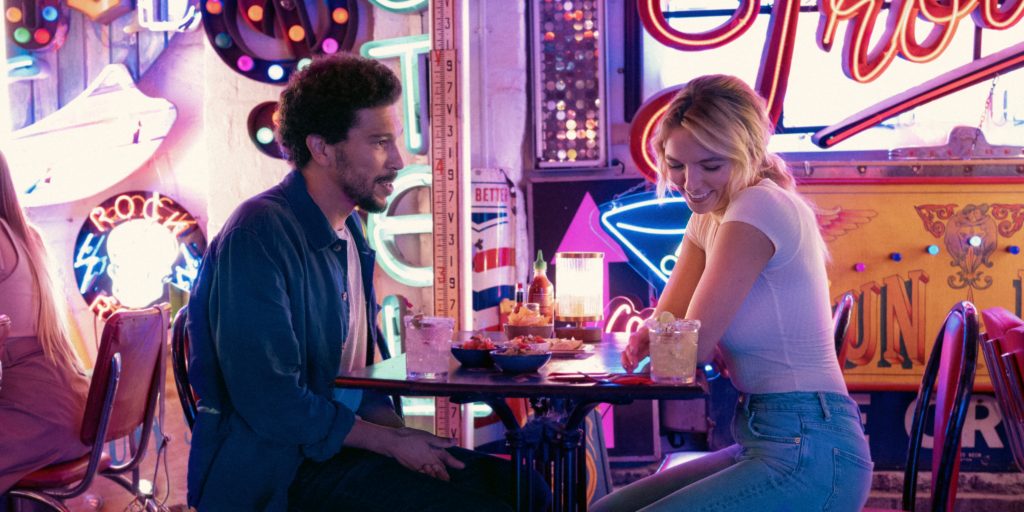
However, the duo “still had to convince everyone else” on the production that it was the right approach to shooting The End We Start From. Not least because there were a number of key considerations.
“Most importantly, we were filming with a number of different babies throughout so there were concerns about us being able to run as long as we wanted,” she adds. “Then there’s the fact we weren’t working with a huge budget and shooting on digital is usually perceived as being cheaper. That meant production had to work out the cost. In addition to that, we had logistical issues, such as being able to shoot the water tank.”
With the odds stacked against them, Lavelle and Belo “presented” their case and were given the go-ahead. In Lavelle’s words, “it worked out beautifully”. The entire feature was shot on Kodak 500T 7219 stock.
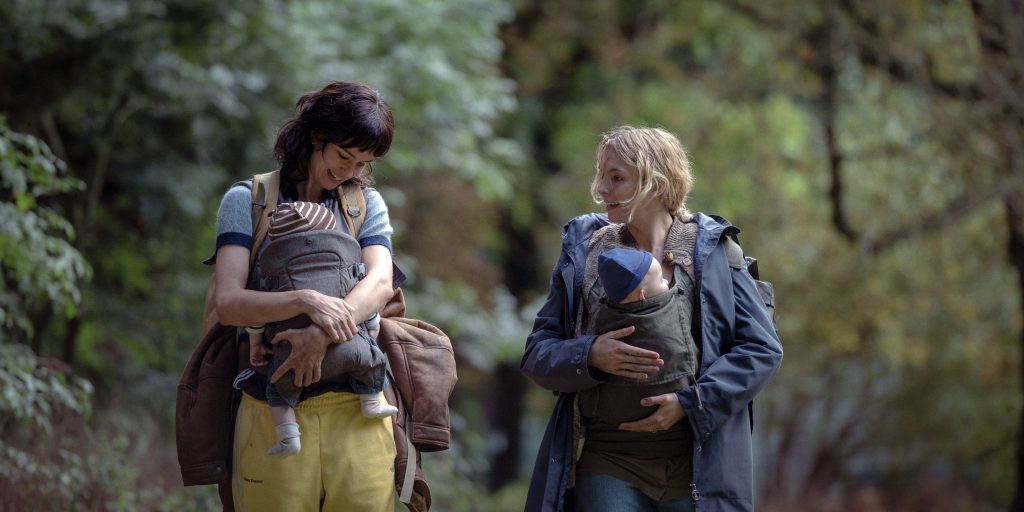
Mixing metaphors
Without wanting to reveal too many spoilers, metaphors play a large part in the visuals and it’s pivotal to emphasise the opening scene’s symbolic essence in setting the film’s tone. Comer’s character, the primary protagonist, initiates proceedings by running a bath, where rising water levels shroud the view in ominous mystery. Navigating through the house amidst heavy rainfall, she collapses, plagued by contractions, blurring the lines between a potential leak, rainfall and the early onset of labour. The segments that are intercut with giving birth and water coming through the house were done with the help of production designer Laura Ellis Crick. “I love the metaphor here – the fact the mother’s world is drowning,” adds Lavelle. “Laura made all that happen and came up with some great ideas, such as the exterior water tank and a bit of set wall. She was leading the charge and making sure we could do what we wanted. Basically, Laura made all the visions Mahalia and I had possible.”
Lavelle chose to shoot with the ARRI Arricam LT with 400-foot loads and the lightweight Arriflex 235 with Cooke S5 lenses for slow-motion shooting and full in the knowledge that a significant portion of the film required handheld shooting. With that in mind, the strategy was to maintain a compact setup, avoiding an excessively large camera and kit. “Then I think the main concern from production as well was just keeping the VFX easily doable, mixed with not cutting so frequently and having enough time to just keep rolling on a baby because the baby isn’t going do what you tell it to do – ever,” Lavelle adds. The film enlisted Theodor Groeneboom (His Dark Materials), founder and supervisor at the small creative boutique Rebel Unit, as its VFX supervisor. He joined the production team on recces, which gave them time to talk concepts “quite early on in the process to work out how the team was going to create everything”.
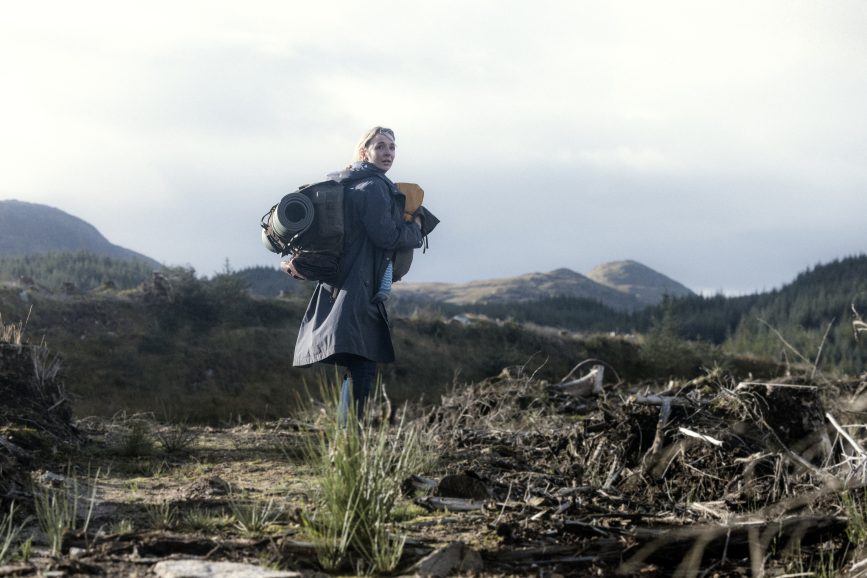
The heat is on
Real-life weather conditions presented an ironic challenge throughout the shoot. While filming a narrative about global warming and flooding, the production team faced a paradox – a severe drought and August heatwave in 2022 complicated the process.
“This had an impact on locations because there were so many considerations, such as how we make it work well for VFX where would really naturally flood so it was an ongoing collaborative process with Theo,” Lavelle adds. “Say the mother and baby are driving down the road and their side of the road is supposed to be flooded Theo or one of his people would be on set – this meant we could communicate through the monitor and say ‘water there’. That at least gave us something to work with.”
Lavelle didn’t film the end section in which mother and baby are in a boat sailing through the City of London witnessing the devastation, but she’s well aware of how much effort went into shooting the sequence.
“We couldn’t afford an array rig to go down Fleet Street and we knew we couldn’t close central London, so the team had to get very creative,” she recalls. “The plates with Jodie and baby were captured on the reservoir – that was shot outside London mainly with greenscreen. Everything else you see is a full build based on stills, photography, shoots and digital shoots that I did with Mahalia. Theo then did a whole VFX slider pass on those streets.”
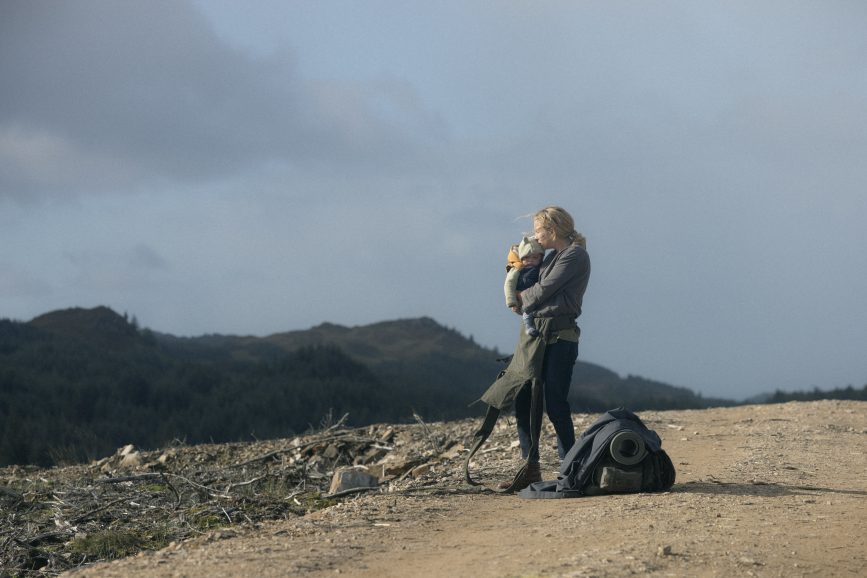
Remote challenges
The film took 30 days to shoot in total, with locations including in and around the M25, London, Oxfordshire and Scotland, with all but no set. However, it was the filming in Argyle, north of the border, that proved the most challenging for Lavelle and her team. “That was definitely the case in terms of time and access,” she adds. “Then there’s the fact we were in a very remote place, so managing to get the crew in and out in a day and filming Jodie walking into the sea for that section was tricky.”
However, Lavelle describes the experience as “beautiful” and her favourite scene. “That’s partly just in terms of where the character is at that moment in the film and a bit of relief and that it feels like she’s been forced to be quite passive in this crisis and this journey and you’ve just got to get on with it and look after your baby,” she says. “It also just felt like she was taking control of the situation. She’s in a fishbowl at the beginning and then there are metaphors of water to do with drowning, with waste and rot and she’s just taking it all back. Also, I just loved being in the sea at sunset with Jodie. The light was beautiful and whilst we were there for only a few takes, it was so liberating.”
Lavelle also reserves praise for Kodak and ARRI for enabling the production to be shot entirely on film. “They gave us a great deal and made sure we had great communication and support,” she adds. “They were there to help the entire time on a shoot on which we may not have been able to use film at all. It was also the first time I had worked with colourist Paul Ensby, who I think is a genius. He was the right person for tactile 2-perf and was great at being gentle with the negative.”
